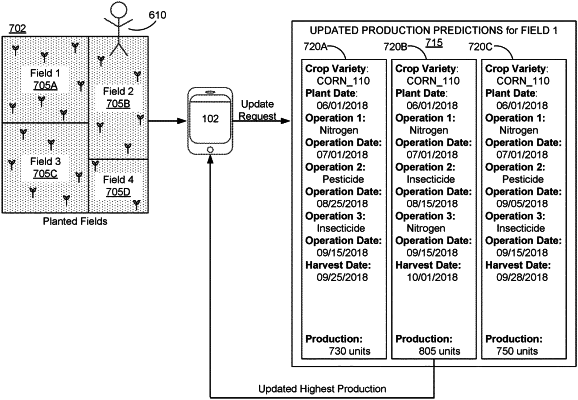| CPC G06Q 50/02 (2013.01) [A01B 79/005 (2013.01); A01B 79/02 (2013.01); A01C 21/00 (2013.01); G05B 13/025 (2013.01); G06F 18/217 (2023.01); G06F 30/27 (2020.01); G06N 3/08 (2013.01); G06N 5/04 (2013.01); G06N 20/00 (2019.01); G06Q 10/04 (2013.01); G06V 20/188 (2022.01); G06T 2207/20081 (2013.01); Y02P 60/20 (2015.11); Y02P 90/70 (2015.11); Y02P 90/84 (2015.11)] | 20 Claims |

|
1. A method comprising:
identifying a cluster of portions of land associated with a threshold similarity;
selecting a portion of land from the cluster of portions of land, the selected portion of land associated with crop growth information describing 1) characteristics of the selected portion of land, 2) a first set of farming operations to be performed, and 3) a first expected carbon sequestration corresponding to the first set of farming operations;
applying a prediction model trained on historical crop growth information from a plurality of geographically diverse locations to inputs comprising the characteristics of the selected portion of land, the first set of farming operations to be performed, and the first expected carbon sequestration corresponding to the first set of farming operations, wherein the prediction model optimizes a second expected carbon sequestration by producing an output comprising a second set of farming operations that can produce the optimized second expected carbon sequestration; and
for the selected portion of land, 1) modifying the first set of farming operations to be performed based on the identified second set of farming operations, and 2) modifying a user interface displayed by a client device of the user to display a crop growth program based on the modified first set of farming operations.
|